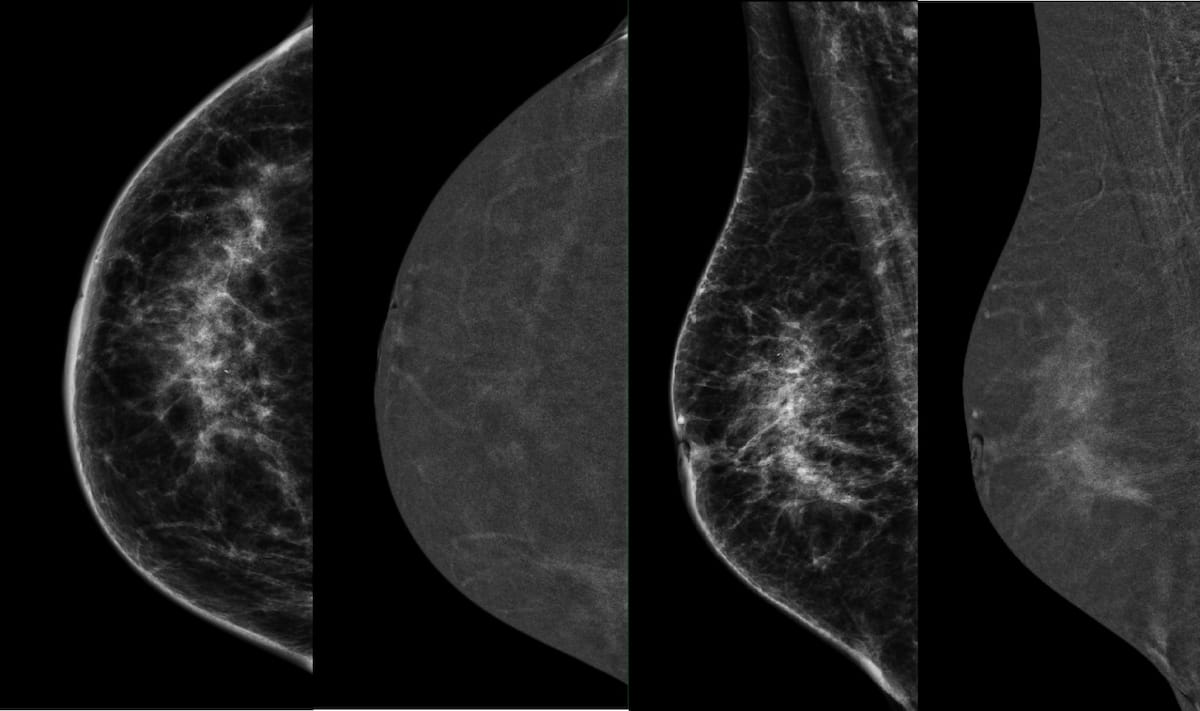Five Insights on Artifacts and Limitations with Contrast-Enhanced Mammography
Noting that technique issues, patient positioning miscues and atypical features can all contribute to faulty interpretation with contrast-enhanced mammography (CEM), researchers at the European Congress of Radiology shared their insights on navigating artifacts and limitations with CEM.
With the ongoing utilization and promise of contrast-enhanced mammography (CEM) to help assess tumoral neovascularization, researchers have also noted challenges with the imaging modality.
Accordingly, in a poster presentation at the European Congress of Radiology, researchers discussed key limitations as well as artifacts that can occur on CEM. Here are a few takeaways from their research.
1. Emphasizing that nipple enhancement artifacts tend to be asymmetrical in nature, the poster authors suggested using low-energy (LE) images to help differentiate between artifactual enhancement and pathologically thickened skin. They also noted that ultrasound can be beneficial in recognizing artifactual nipple enhancement caused by positioning issues.
2. The researchers cautioned that drops of contrast may mimic calcifications on CEM. However, they noted that actual calcifications will be black on recombined (RE) images whereas contrast agent will show up as white on LE and RE images.
While contrast-enhanced mammography revealed no pathological mass or non-mass enhancement, subsequent ultrasound imaging led to a confirming biopsy diagnosing invasive lobular carcinoma. (Images courtesy of the European Congress of Radiology.)

3. Premature breast compression may cause venous contrast retention and subsequent intensity in vascular opacification, according to the poster authors. They noted that resulting dense linear opacities corresponding to vascular structures may appear on initial LE and RE image acquisitions. If the dense linear opacities are still appearing on the last images acquired, the authors said one should suspect venous occlusion.
4. Due to weak enhancement on CEM, the poster authors noted that it may be difficult to differentiate some malignancies, such as invasive lobular carcinoma, papillary carcinoma, and mucinous carcinoma, from background parenchymal enhancement (BPE). For these challenging cases, they emphasized subsequent ultrasound imaging.
5. The combination of thick peripheral enhancement with a central or partial negative contrast enhancement (NCE) sign may occur with benign and malignant breast lesions, according to the poster authors. They pointed out that mucinous carcinoma may have low visibility on RE views and can be confused with pseudocystic lesions.
Reference
1. Constantin IL, Harguem S, Arfi-Rouche J, Baileyguier C. Contrast-enhanced mammography — artifacts and pitfalls. Presented at the European Congress of Radiology, February 28-March 3, 2024, Vienna, Austria. https://www.myesr.org/congress/
SNMMI: Can 18F-Fluciclovine PET/CT Bolster Detection of PCa Recurrence in the Prostate Bed?
June 24th 2025In an ongoing prospective study of patients with biochemical recurrence of PCa and an initial negative PSMA PET/CT, preliminary findings revealed positive 18F-fluciclovine PET/CT scans in over 54 percent of the cohort, according to a recent poster presentation at the SNMMI conference.
SNMMI: What a New Meta-Analysis Reveals About Radiotracers for PET/CT Detection of PCa
June 22nd 2025While (68Ga)Ga-PSMA-11 offers a pooled sensitivity rate of 92 percent for prostate cancer, (18F)-based radiotracers may offer enhanced lesion detection as well as improved imaging flexibility, according to a meta-analysis presented at the Society for Nuclear Medicine and Molecular Imaging (SNMMI) conference.